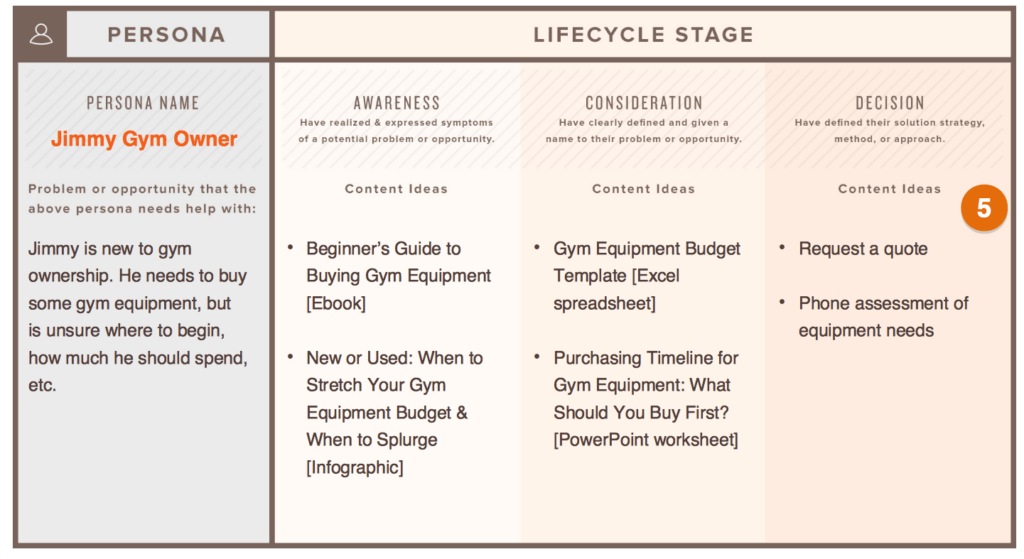Inbound marketing is about creating something that attracts prospects.
Finding new customers is like fishing. You can cast a big net and hope you catch plenty of fish, or you can bait a hook and wait for the right fish to come to you.
If you’re a manufacturing company that’s particular about the kind of fish you want, you should use inbound marketing as bait.
Inbound marketing is about creating something that attracts prospects, rather than plying them with marketing messages they don’t want to see.
What Is Lead Generation?
Lead generation is how you bring more prospects to your company. The methods of marketing for manufacturing companies have evolved beyond old fashioned marketing tactics. Cold calls go to voicemail, mailshots go straight in the bin, emails are deleted instantly.
No one has time to hear your company salesman recite your product brochure, but everyone wants answers to their problems.
Inbound marketing is giving people answers to the questions they want in the format that suits them. If prospects have knowledge and information that benefits them, there’s more chance they’ll come to you.
So you need a two-pronged approach: become that source of information, and let the world know about it. Your goal is to be so useful that potential customers have to engage with your business, and tell others to do the same.
19 Lead Generation Techniques for Manufacturers
We’ve researched this topic thoroughly, and there are a lot of ideas out there. To save you time and effort, we’ve collected our favourite techniques. Study these and make your business a lead generation machine!
1. Develop a Marketing Strategy
Create a strategy and stick to it. Inbound marketing takes work, and you won’t maximise the return on that effort with a shotgun approach. Work through how you’re going to deliver your plan, assign responsibilities to each member of staff, and build it into the way you work.
A strategy helps you generate leads because it gives you clarity on what you’re trying to achieve and how you’re going to do it. For example, if you’re going after retailers or distributors, you can tailor your plan to target them.
2. Understand What You’re Trying to Measure
Define some measures. How many leads are you trying to generate per quarter? How many page views do you need to generate that many leads? If you ask these surface questions, it’ll lead to more in-depth questions.
Why is this particular page generating more leads than another? Is it the picture? The text? You have to get below the surface to get the juicy information!
3. Follow Your Competitors
Learn from competitors and take inspiration from what they’re doing. Don’t ever duplicate content though! It looks terrible and can land you in all kinds of trouble. Instead, see what the competition is doing to be useful, and go one step further. If they mention that lubrication is an integral part of product maintenance in a blog, how can you make it better? Can you create a video? Give a demo?
4. Maintain An Online Presence
When it comes to buying products, Accenture found that 19 out of 20 buyers said they do some research online before actually purchasing. Similarly, market research specialists Forrester say that three in every four business buyers ‘conduct more than half of their research online before making an offline purchase.’ The takeaway? Your business must have a web presence if you want to be in with a shot of getting more leads.
5. Establish Buyer Personas
When you’re making a product, it’s usually sold to another business that sells it on at a retail price.
Think about the people at these businesses who are searching for your product. It’s probably a mix of scientists, engineers, maintenance and production managers, maybe also senior buyers and purchasing managers. Create personas for each of these people, describing who they are, what their needs are, and what they plan to achieve.
If you have a deeper understanding of your buyers, it makes it easier to target them. And targeting the right people means more leads.
6. Speak In Their Language
Use the customer’s words to describe challenges and potential solutions. If you use specific terms and expressions your customers don’t know, you’ll get a mismatch between the content you’re producing and what they’re searching for.
The importance of language is underestimated in lead generation, a lot of companies use industry terms and jargon (S&OP, debottlenecking?!) to impress prospects when actually, they’re looking for a simple explanation. Simple = more leads.
7. Know Your Prospect’s Challenges/Goals
Align content with customers’ interests. Having worked out who you want to visit your website, think about what they actually want. It’s not the amazing features of your product that they care about, at least not at first.
What they’re after is the solution to a problem. So put yourself in their shoes and work out what problems your potential customers are trying to solve.
Many manufacturers have product-based selling syndrome, which hinders the ability to generate leads as it detracts from what buyers want to hear at the initial stages of goal setting or realising they have an issue to solve
8. Understand How to Map Content
B2B buyers work in teams. It’s rare to deal with the same person from initial enquiry to shipping and payment. You’re more likely to be passed from one person to the next. Perhaps an engineer makes the initial contact, but when it comes to making a purchasing decision, you’re passed to a senior buyer. To generate more leads, you have to know how to connect with different people at an organisation.

9. Create a Keyword-Based FAQ
Answer all the questions your sales team report people ask them on sales calls. Making yourself useful means answering questions and helping customers understand how they could and should use your product.
If you sell pumps, you might explain the different types and the situations where each is most appropriate. It could include explaining how to size a pump, and maybe some advice on installation procedures.
This isn’t information the customer should pay for. If you don’t provide it a competitor will, and anyway, your goal is to provide valuable resources.
10. Focus on Quality
Make quality content a priority. Creating thoughtful blogs or white papers with depth is not something to delegate to the receptionist or a student working with you for the summer. That said, few engineers and scientists, (the people who know your products best) should be part of the process.
That means you’ll have to find a competent Content Marketer with in-depth technical knowledge or put your writer to work with your technical staff. Poor quality content is an immediate turn-off and will deter most people from interacting with your business.
11. Update Old Content
If you’ve already got some good search engine rankings, you could be sat on a gold mine. Let’s say you’ve got 5 articles on the second page of Google, why not try to get them to the top?
Identify new keywords and phrases, add to your content frequently, and optimise your content. Google loves old content that’s continuously updated, so that’s what you must provide if you want to get to the top page of search results and generate more leads.
12. Be Credible
Engineers and scientists who visit your website won’t appreciate shoddy, inaccurate content. It’s essential to get your facts and figures right and to convey them authoritatively without sounding like a university textbook. The ideal blog has technical information but delivers it the way your knowledgeable friend would.
13. Start Optimising Your Web Pages
There are three types of search engine optimisation: on-page, off-page, and technical. Technical SEO focuses on aspects of your website like page speed, on-page focuses on page optimisation factors like the appropriate use of headers, and off-page focuses on your relationships with other sites, like backlinks.
Improving your SEO score will make search engines like you, and if search engines like you, you’re more likely to appear on the top page. Which equals more traffic and more leads.
If you have WordPress, install Yoast, which shows you what you need to do to make your pages optimised for search engines.
14. Develop a PPC Strategy
Pay-per-click advertising is useful for generating leads because you can target specific audiences, and Google will place your add at the top of search engines if it’s good enough.
While content can take months or years to rank on the top page, PPC can get you there quickly. You should use PPC as a supporting strategy for your content marketing efforts, as it can be expensive.
15. Analyse Your Website Design & UX

The way your website is designed should facilitate lead generation. There should be a clear user journey with a clear call to action.
You have to make people want to stay on your website, intrigue them and show them it’s worth sticking around.
16. Use Simple Calls to Action
‘Request a Brochure’ and ‘Learn More Now’ buttons make it easy for customers to follow actions and allow you to generate a lead in the process. Netflix explains their offer in 11 words, it’s a bold, simple CTA that converts!
17. Share Your Content On Social Media
Social publishing. You might have the best content in the world, but it’s of no use if people don’t know about it. Don’t hope it gets picked up and spread around, promote it! LinkedIn is a useful tool, but Facebook, Twitter and Instagram all have a place. Schedule posts to let the world know you’ve published some useful new tool, graphics or white paper.
18. Interact With People
Invite interaction. Ask for comments, feedback, questions, and respond to them! Every stand-up comedian knows the importance of interaction. It helps them do a better job, and the same goes for your blog and other content. Invite feedback, ask for application stories and pose provocative ideas. If you can interact with people positively, they’re more likely to become a lead.
19. Make Yourself Available On Different Channels
The customer chooses the channel. They don’t all want to use the phone. Some are too busy, others might not speak English or be in a different timezone. Some will email, others might want to text, message on LinkedIn, or use an online chat service. Your opinion of these is irrelevant. If that’s how the customer wants to work with you, follow them or risk sending them to a more accommodating competitor and losing them as a lead.

